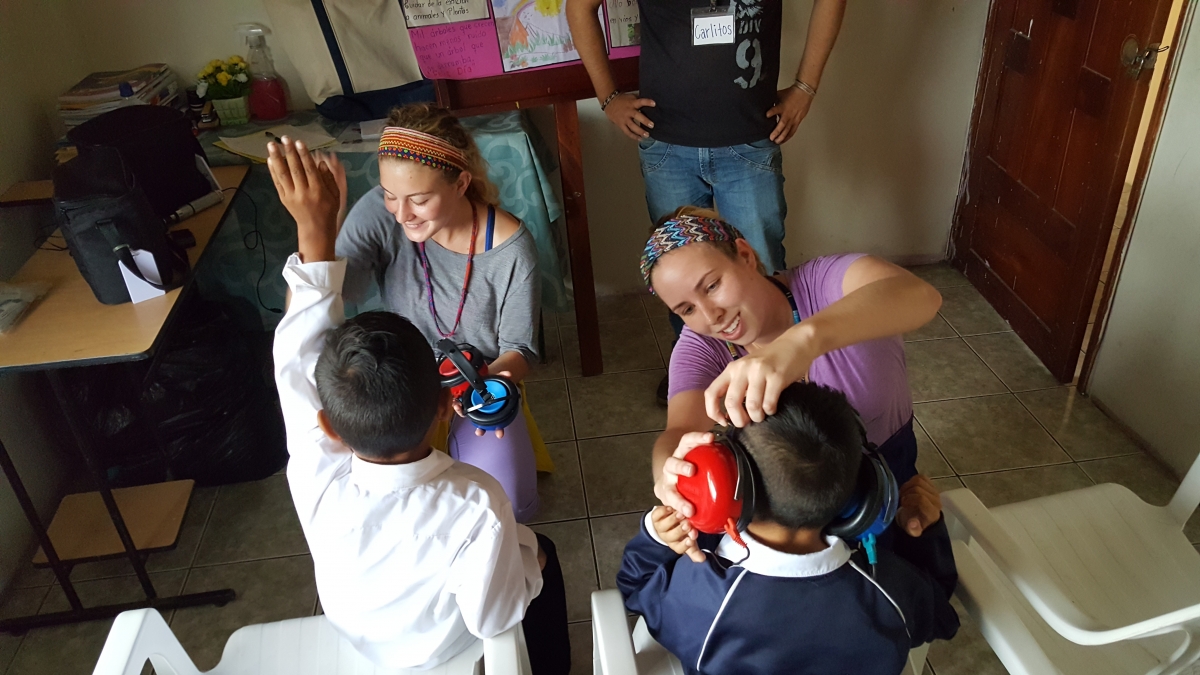CHS students empower Ecuadorian communities during Shoulder to Shoulder brigades
In Santo Domingo, Ecuador, locals line up outside the University of Kentucky staffed Shoulder to Shoulder clinic with a variety of needs. For many Santo Domingo residents, there are almost no options for specialty care in the area and little access to primary care. Each year, the UK College of Health Sciences (CHS) participates in a clinical intervention brigade comprised of physical therapy (PT) students, and a health promotion brigade made up of communication sciences and disorders (CSD) students to help bridge this gap in access to care.
Shoulder to Shoulder Global is a UK Global Health Initiatives organization that integrates academic and community partners to improve the health and well-being of an underserved Ecuadorian population.
Every year, the UK PT program recruits six physical therapists, 12 PT students and a cluster of undergraduates to round out the team at the clinic where free treatment is given to this community. The brigade PT students join deploys during March, May, and August. Meanwhile, the CSD program takes part in the June brigade that serves the broader mission of Shoulder to Shoulder: working to combat poverty in Ecuador.
“Our DPT students are all in the professional program but there are students from our college who might go as undergrads as they prepare for a graduate program,” said Lynn English, PT, MSEd, DPT, director of clinical education for the UK PT program, who leads the physical therapy team in Ecuador. “The team consists of multiple professions. It truly is an interdisciplinary effort. We have some undergrads who might work as interpreters; it’s quite a mix of people from across all the health colleges and others at the university.”

Third-year DPT student Amy Gelhaar felt her healthcare knowledge was truly solidified by her own experiences as part of the clinical intervention brigade.
“I looked up one day at the clinic to see how long the waiting line was for physical therapy. It was incredibly long,” Gelhaar said. “Although the patients had been standing for long hours, and in the heat, all I saw were smiling faces and pleasant conversations. These people are underserved, wait to see us all day while in pain, and instead of complaining they were laughing! I realized their outlook is so important for a fulfilling life.”
“We saw so many people with musculoskeletal pain that we were able to help, and not just in the short term,” Gelhaar continued. “The ability to educate our patients about their specific condition allows the patient to take their health into their own hands. It creates autonomy for our patients. It really helped me to understand the role of physical therapy within health care.”
Melissa Liechty, MSP, CCC-SLP, a speech language pathologist with UK Healthcare, is in charge of the CSD team. “The June brigade is a little different because we are mostly focused on health education and promoting health literacy,” she said. “We serve the community in other capacities besides direct clinical care. For example: We visit many schools in the area to teach about topics like appropriate nutrition, exercise, hygiene, women’s health, drug use, and behavior management.”
In addition to assisting Santo Domingo’s schools, the June brigade serves an adult home in the city and offers hearing and language screenings to the community members.
Both the clinical intervention and health promotion brigades strive to simulate the interprofessional environment demanded across the health sciences landscape. “Students from many different colleges participate, such as public health, pharmacy, nursing, and arts and sciences,” added Liechty. “All of our students work together to present the health care information and facilitate conversations about prevention and intervention in Ecuador.”
A typical day at the Ecuador clinic requires participants to rely on both their most fundamental skills as healthcare providers and their most advanced skills. The communication barrier with patients can also be a challenge—but when overcome or worked around—it becomes a rewarding experience or memory.
“I hear from students that the communication barrier and working with an interpreter can be challenging” Liechty said. “But, at the same time, students tell me how they were emotionally moved by a hug from a patient. A nonverbal affirmation means so much. They’re astonished by how grateful the patients are. Communication is so much more than talking, and when they take these interactions back home and into the workplace, they understand that patient interaction is much more than the words they say.”